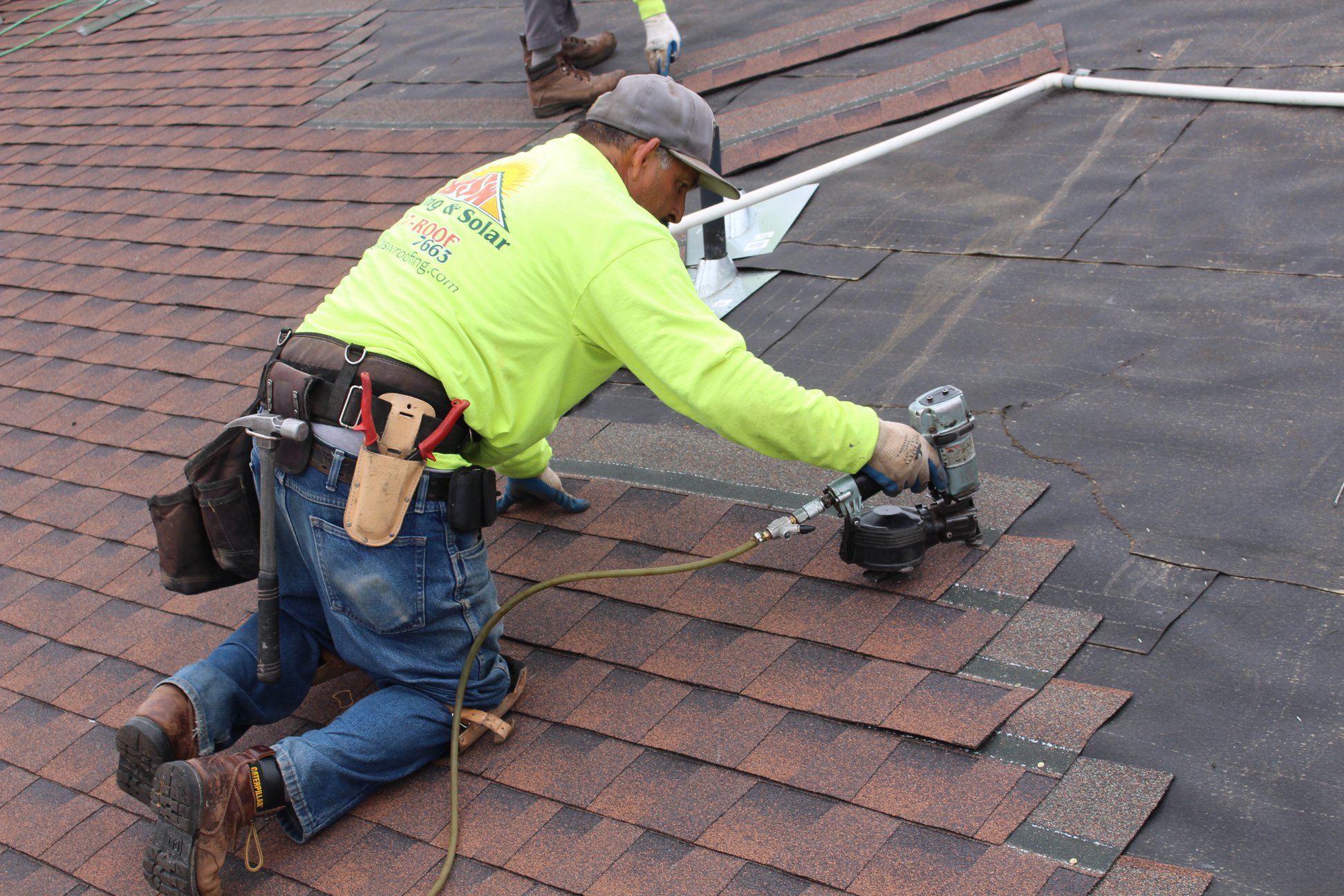The Value of Selecting Professional Roofing Companies Gainesville Florida
Wiki Article
Best Practices for Ensuring Correct Roof Covering Air Flow
A well balanced intake and exhaust vent proportion, generally 1:300, plays an essential role, with intake vents ideally put at the reduced edge of the roofing system for cool air entrance and exhaust vents at the top for cozy air exit. Keeping insulation away from vents is critical to protect against air flow constraint.Understand Ventilation Basics
Correctly understanding ventilation basics is crucial for making sure the durability and performance of roof. Effective air flow minimizes wetness build-up and temperature level extremes in the attic room, both of which can result in considerable structural damages with time. A well-ventilated roofing system aids in stopping usual problems such as mold and mildew growth, wood rot, and ice dams, which can jeopardize the stability of the roofing materials and the underlying structures.The main goal of air flow is to assist in the activity of air, enabling a consistent exchange between the indoor and outdoor atmospheres. This equilibrium is achieved via a combination of consumption and exhaust vents that collaborate to keep ideal air movement. Consumption vents, commonly situated along the soffits or eaves, enable fresh air to go into the attic room room, while exhaust vents, often situated at or near the roofing system ridge, allow hot, humid air to leave.
Key variables affecting the effectiveness of roofing system ventilation consist of proper positioning, appropriate sizing, and making certain that both consumption and exhaust vents are unobstructed. Regular examination and upkeep are crucial to recognize potential blockages, damages, or ineffectiveness in the ventilation system, consequently securing the roofing's efficiency and longevity.
Types of Roofing Vents
Roofing system vents play a vital duty in keeping effective attic room ventilation and, by extension, the overall wellness of the roof covering system. Different types of roofing system vents are offered, each with distinct benefits tailored to specific roofing requirements. Ridge vents, for instance, are set up along the roof covering's peak, permitting warm, humid air to run away from the attic. They supply constant air flow and mix effortlessly with the roofline, making them both reliable and cosmetically pleasing.
Soffit vents are set up under the eaves and operate in tandem with roofing vents to make sure a well balanced consumption and exhaust system. By permitting cooler air to get in from below, soffit vents promote the expulsion of warm air via top vents. Gable vents, situated on the outside wall surfaces of the attic, offer an additional efficient solution, particularly in homes with gable roofs.
Analyze Your Existing Air Flow

Next, consider the age and problem of your roof materials and air flow parts. Older systems might not abide with current building regulations or might have worn away with time, reducing their efficiency. Conduct a comprehensive exam to identify any type of indicators of wear and tear, such as corrosion, damage, or voids that might compromise the system's performance.
In addition, determine the attic room temperature and humidity degrees. High temperature levels and moisture can show inadequate air flow.
Setup Best Practices
Effective installment of roof covering ventilation systems is vital for ensuring optimum performance and durability. Appropriate installation starts with comprehending the details air flow needs of the structure and the roof it covers. This involves determining the proper ratio of consumption to wear down vents, usually adhering to the 1:300 rule, which stipulates one square foot of ventilation for every single 300 square feet of attic floor space.
The placement of vents is just as essential. Intake vents should be mounted at the roofing system's reduced edge, commonly in the soffits, to enable great air to get in. Exhaust vents, on the various other hand, must be set up near or at the roof covering's height to facilitate the exit of cozy, wet air. This creates a natural airflow that helps maintain temperature level and go to these guys dampness equilibrium within the attic room.
Seal all air vent links carefully to stop air leakages and possible water seepage. Use high-quality materials and comply with maker guidelines to make certain sturdiness and effectiveness. Additionally, incorporating ridge vents with baffles can significantly enhance air flow performance by stopping wind-driven rainfall and snow from going into the attic room.
Inevitably, precise installment of roof air flow systems minimizes potential problems such as mold and mildew development, ice dams, and structural damages, ensuring the roof's honesty and the structure's total health and wellness.
Routine Upkeep Tips
Uniformity in upkeep practices is essential to guaranteeing the long-lasting efficiency of roofing air flow systems. Throughout these examinations, ensure that vents are totally free of debris, nests, and various other obstructions that can hamper air flow.
Use a soft brush or a vacuum to remove dirt and debris from consumption and exhaust vents. Be mindful not to harm the vent screens or louvers during the procedure.
Appropriate insulation is just as important. Make sure that attic insulation does not obstruct the vents, as this can severely limit air movement. Reposition or change it to preserve an efficient obstacle. if any insulation has shifted or resolved.
Finally, change any type of damaged or missing out on components without delay. Busted vents, cracked roof shingles, or shabby flashing can all add to inadequate air flow and ought to be resolved without delay. Regular maintenance ensures that the roof ventilation system operates efficiently, therefore extending the life-span of the roofing itself.
Verdict
Making certain appropriate roof covering air flow is critical for keeping the performance and longevity of a roof system. Adherence to the 1:300 consumption and exhaust vent proportion, combined with the critical positioning of vents, is essential. Routine semiannual inspections, particles cleaning, and making sure insulation does not block air movement are critical practices. Executing these finest methods will promote a well-ventilated roof, therefore reducing possible issues connected to moisture accumulation and excessive warmth, ultimately extending the roofing's life expectancy.A balanced intake and exhaust air vent ratio, typically 1:300, internet plays a critical function, with intake vents ideally placed at the lower edge of the roof covering for amazing air access and exhaust vents at the top for cozy air exit. Intake vents, generally situated along the soffits or eaves, enable fresh air to get in the attic room space, while exhaust vents, usually located at or near the roof ridge, enable hot, moist air to get away.
Soffit vents are installed under the eaves and job in tandem with roof covering vents to make certain a well balanced intake and exhaust system. By allowing cooler air to get in from below, soffit vents promote the expulsion of warm air via top vents. Adherence to the 1:300 consumption and exhaust air vent proportion, paired with the calculated positioning of vents, is crucial.
Report this wiki page